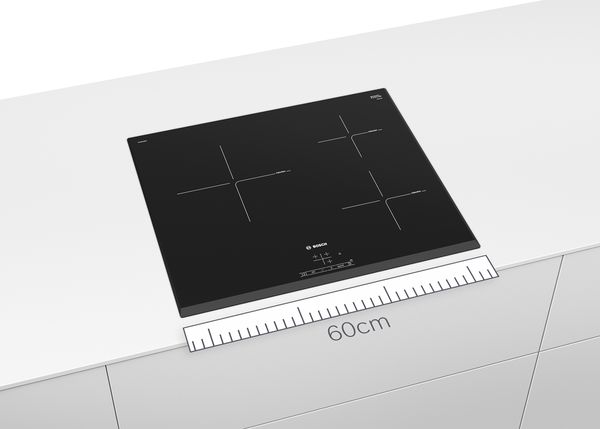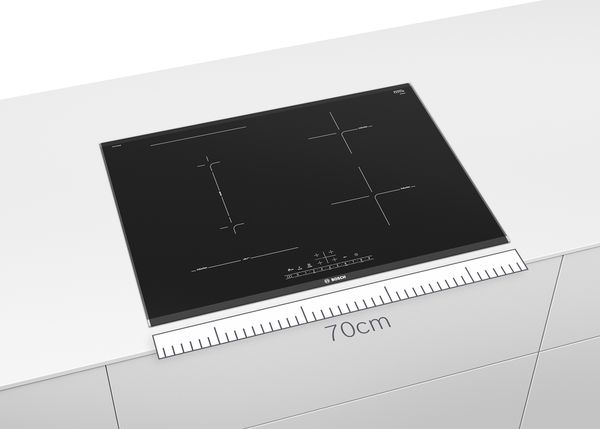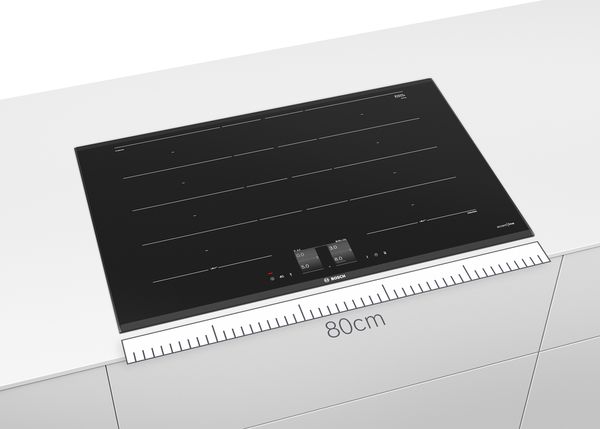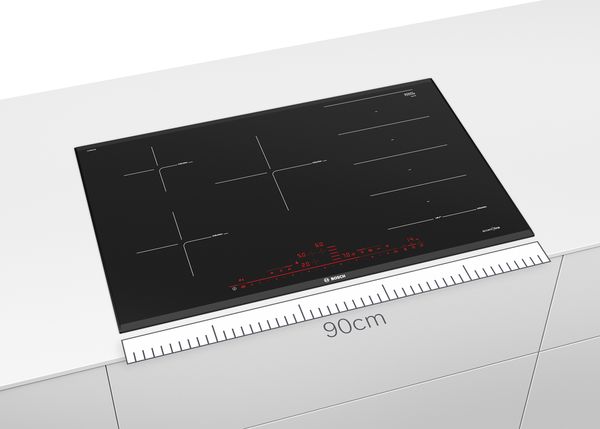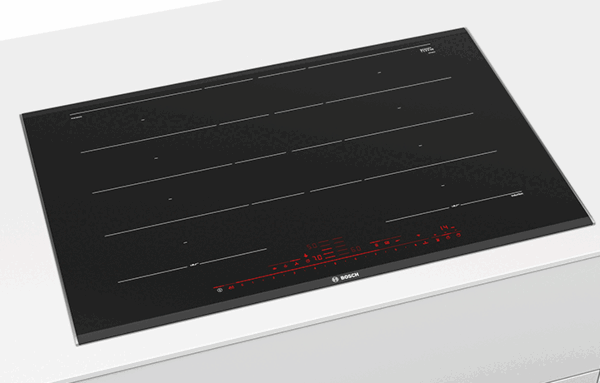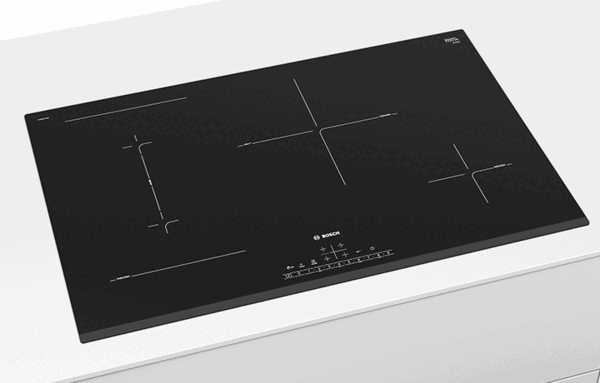Ready to choose a new induction or ceramic hob? Our Hob Finder makes it easy. After answering a few questions about your kitchen space and personal tastes, we'll tell you which model ticks all the boxes.
6 key questions for electric hob buyers.
Which is the best electric hob for your needs?
What is an induction hob? What is a ceramic hob? What is the difference between an induction hob and a ceramic hob?
Which induction hob sizes are available? You might be asking yourself these great questions if you're looking for a new electric hob. Our buying guide for induction hobs and ceramic hobs is here to help.
The first choice to make is between induction and radiant heat. Factors like hob sizes and hob controls are also important. Perhaps you also want to look at a hob's energy-efficiency or are interested in the latest advances in technology.
Below we explain what to consider when choosing a new electric hob for your kitchen.
1. Which type of electric hob: induction or ceramic?
With a flat black cooking surface, induction hobs and ceramic hobs (radiant hobs) are visually very similar. The main difference lies in their performance: induction heats much more quickly and efficiently. An induction model is also easier to clean. Since the surface of an induction hob doesn't get hot, there are no burnt food bits to scrape off. If your current hob is ceramic (radiant), you can install an induction hob in the same cutout.
2. Which hob size fits my cutout?
Both induction and ceramic hobs come in varying widths, ranging from 30 to 90cm. The right one for you depends on your cooking habits and the space available in your kitchen. A wider hob lets you comfortably cook with multiple pots or pans at once.
Ceramic and induction hob sizes.
Ceramic and induction models are available in the following widths:
- 30cm (domino)
- 60cm (standard)
- 78cm
- 80cm
Pro tip: If you have an extractor hood, your hob should be the same width or slightly narrower.
3. How do I want to control my hob?
An induction hob is controlled either by knobs on the oven or a type of touch-based controls on the hob's surface. Depending on the model, the touch-based options range from basic touch buttons to an advanced touchscreen:
- A TFT touchscreen provides a clear overview and helpful guidance.
- Premium touch control has extra-large illuminated elements that disappear when turned off.
- Comfort touch control has options printed directly on the glass.
- Basic touch control lets you select the power level using + and - symbols.
Ceramic hobs come with either touch-based controls or physical knobs. While most people prefer the sleek look of touch controls, others feel more in control of their hob with knobs they can turn. The knobs are located either on the hob or with the oven controls.
4. How much cooking flexibility do I need?
If you cook with large pots and pans, or rectangular cooking vessels such as roasting pans, you might want a hob with a flexible cooking zone.
6. What about a smart hob and other innovations?
Many of our hobs come with innovative and smart features that make sautéing, frying and boiling more enjoyable.
Smart hob: Models with Home Connect let you verify remotely that your hob is switched off.
Hood-hob connection: Control your hood fan directly on your hob. With manual and automatic modes.
Avoid scorching: The PerfectFry sensor regulates the temperature during frying, adjusting it automatically if needed.
Prevent boiling over: The PerfectCooksensor attaches to a pot and prevents it from boiling over by precisely regulating the temperature.
Need help choosing an electric hob? Hob Finder.

Let Bosch Elevate Your Cooking Experience Today
Cook smart, live better with your Bosch kitchen heroes by your side
Ready to transform your cooking experience? Let our team of kitchen heroes turn your space into a realm of culinary excellence. Explore our innovative range, receive personalized recommendations, and access exclusive offers. Don't just cook – create culinary masterpieces with the help of your Bosch-powered kitchen squad.




